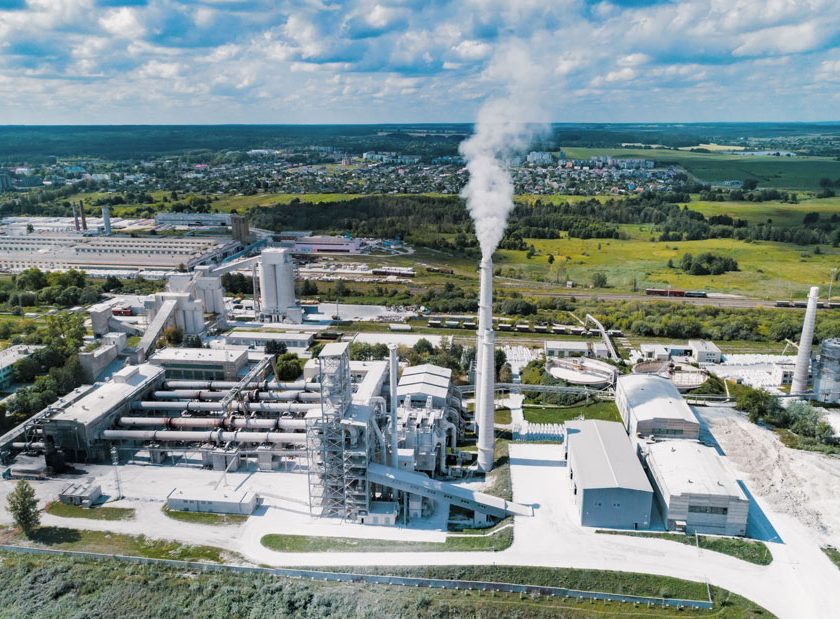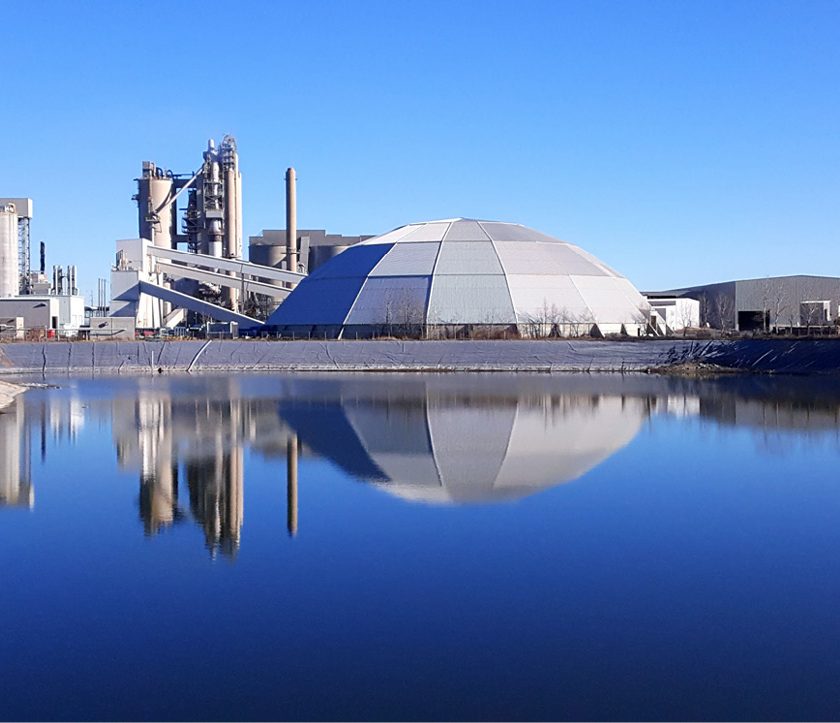New equipment positions company for growth by increasing productivity and capacity, decreasing expense.
By Mark S. Kuhar
Challenge: Make plant upgrades to meet a growing demand for its products.
Solution: Construct a new dry-mix manufacturing facility.
Tip: Some of the materials handled at the plant have the potential for material segregation. To minimize that risk, a model DS-LCB2S level control bin was installed over each pair of valve bag fillers to provide a consistent head of material.
Basalite Concrete Products ULC, is one of the largest suppliers of concrete masonry and dry mix products in western Canada and the western United States. A division of Pacific Coast Building Products, headquartered in Rancho Cordova, Calif., Basalite’s product lines include proprietary pre-mixes, concrete repair material, grouts, mortars, custom pre-blended materials, shotcrete, masonry, and segmental retaining wall products.
In order to meet growing demand for its products, the company decided to construct a new concrete dry-mix manufacturing facility in Surrey, BC, Canada. The company’s wish list included state-of-the-art equipment that would improve efficiency, reduce employees’ risk of musculoskeletal injuries, and accommodate future expansion.
Laying the Foundation
Basalite selected Premier Tech Chronos “because of the technical support we received [from them] during the equipment selection process,” said Dennis Ceolin, Basalite’s general manager for Canadian operations. Equipment needed to handle a wide range of materials, and comprised a fully integrated valve bag filling line, robotic palletizing, and automated load unitizing.
Some of the materials handled at the plant have the potential for material segregation. To minimize that risk, a model DS-LCB2S level control bin was installed over each pair of valve bag fillers to provide a consistent head of material. Two types of valve bag fillers were installed: A pair of impellor-type fillers bag material composed of particle sizes up to 200 mesh while a pair of air-type fillers bag material containing particles larger than 200 mesh.
Choosing Fillers
As Plant Manager Randy Martin explained, “An impeller filler [model 801-MP] … fills bags with very fine powders, Portland cement, flyash, unsanded grouts, etc. This is well-suited to these types of materials that tend to entrain a great amount of air if run through an air packer. Filling [with an impellor model] is more efficient and results in a more tightly packed bag in a shorter period of time.
“A force flow (air) packer [model 787-MP],” he said, “is used for all of our other materials that contain either fine or coarse aggregates … Material is fluidized and a homogenous mixture flows into the bag.”
Bag Handling
Bags packed by either filler are automatically discharged onto a model DS-860A wire mesh packer conveyor and travel through a conveyor system that conditions them for automatic palletizing. This system consists of a model CF-1224 belt conveyor that transfers bags to a model CF-5030 square tubes conveyor, which distributes material evenly in the bags, and then to a model CF-5001 dual-belt bag flattener that forces excess air out of the bags and shapes them for palletizing.
Then, bags travel onto a model OAR-2046 accumulation and bag alignment conveyor and, from there, to a model CF-1224 pacing conveyor before arriving at a model CF-6100 in-motion checkweigher. Exiting the checkweigher onto a model OAR-2016 pick-up conveyor, bags are arranged on pallets by a model AR-225 robotic bag palletizer that automatically rejects any off-weight bags.
Filled pallets travel via a model CP-2006 powered roller conveyor to a model OCP-2001 finished pallet deposit/pick-up station. From there, pallets are conveyed by a model OLH-4041 stretch hooder infeed conveyor equipped with a model OLH-4042 infeed load centering device that ensures each pallet is correctly positioned before entering the model LH-400 stretch hooder. The stretch hooder automatically determines each incoming pallet’s load height before applying a film hood over the load.
Finished pallets then move along the OLH-4051 stretch hooder outfeed conveyor to a model CP-6002 gravity roller finished pallet accumulation conveyor, and stacked to await shipment. Palletizing and stretch hooding are vitally important to keep bagged cement and other cementitious materials free from moisture. Otherwise, bagged material may absorb water and clump, making it difficult or impossible for the end user to use the material.
Challenges
As with any project, unforeseen challenges sometimes arise, and “PT Chronos stepped up to the plate and responded very quickly [to a need for equipment repair] …,” said General Manager Ceolin. “They quickly sent out parts and a technician … and also provided excellent technical support over the phone and through email.”
In addition, after filling equipment had been manufactured, Basalite decided to relocate it within the plant, necessitating field modifications to the automatic pallet dispenser. Premier Tech Chronos provided additional drawings and technical guidance that enabled the on-site contractor to make the modifications.
Positioned for Expansion
Although the plant currently uses an operator to manually position empty bags for filling, fillers are equipped for future integration with an automatic bag applicator.
“Initial production requires that one type of valve bag filler will be in operation at any given time,” said Premier Tech Chronos Sales Manager Gary Ritter. “However, future growth in demand will require that both types of valve bag fillers be operated at the same time which will require the addition of a second robotic bag palletizer to the packaging system. The system was designed to allow for the future expansion with minimal disruption of plant operations [or] plant down time.”
Productivity Up, Cost Down
“We have seen significant gains in productivity, 35 percent to 40 percent on most products, ultimately improving overall production costs,” said Ceolin. “[In addition, we now have the] ability to meet current customer demands and the production capability to expand to new market segments. The new state-of-the-art equipment provides us with the flexibility to blend and package many variations of cementitious products, including concrete mixes, self-leveling mortars, grouts, and shotcrete, and the ability to custom blend mixes to meet specific project requirements.
“The new equipment provides a safer working environment for our employees,” he said. “It has built-in safety features, and the robotic palletizer eliminates musculoskeletal injuries … [Plus], although the plant schedule is variable throughout the year, it has the capacity of running 24/7.”
Information for this article courtesy of Premier Tech, www.premiertech.com.



